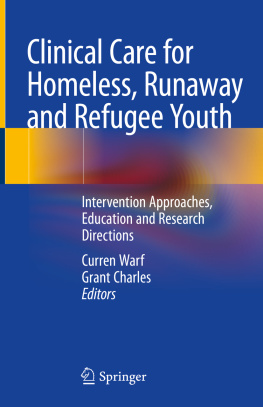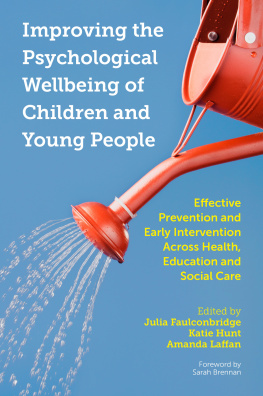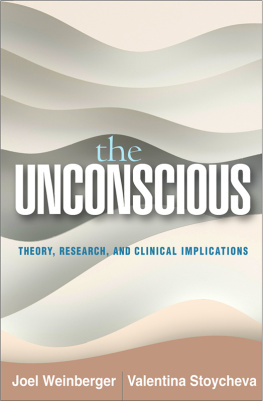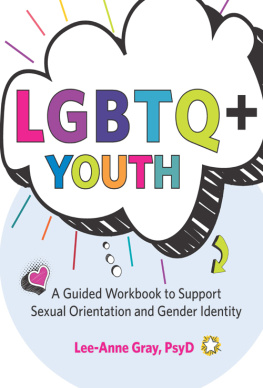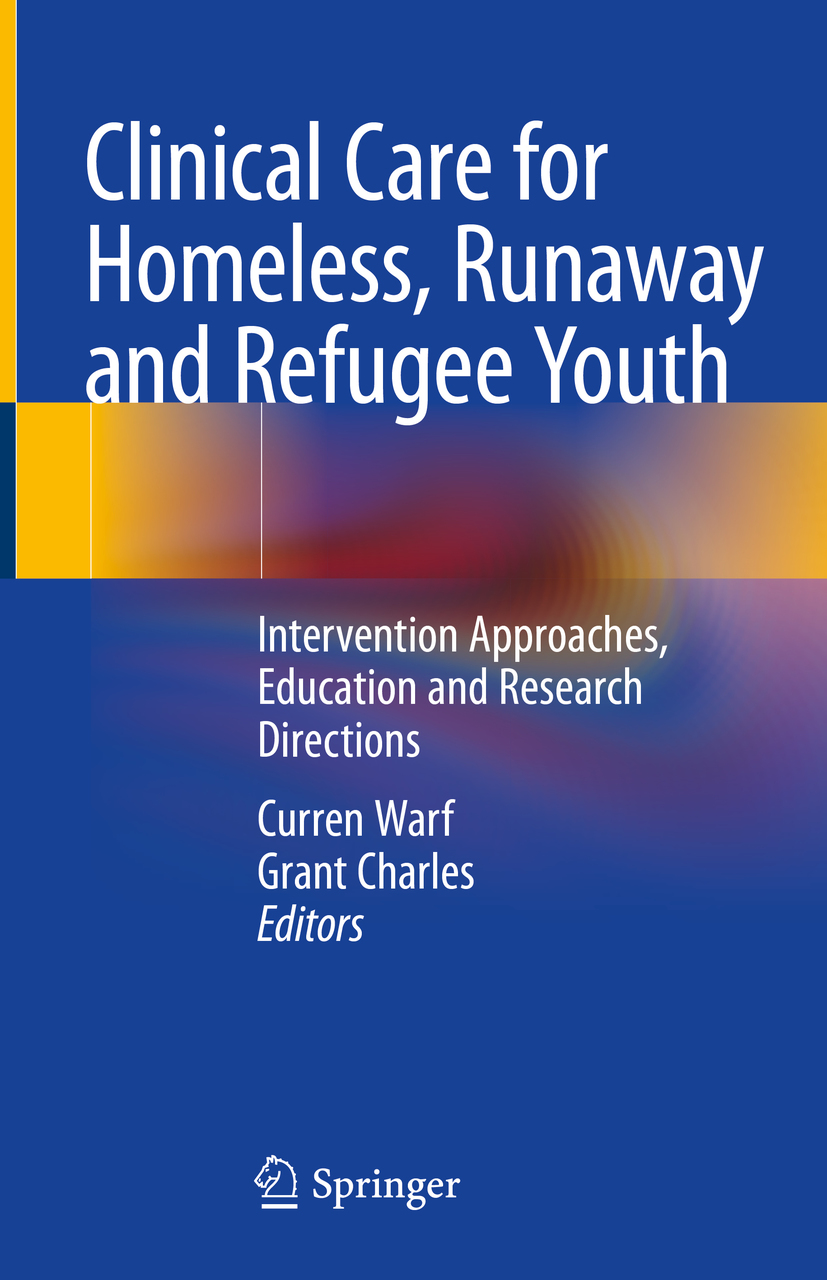Editors
Curren Warf
Department of Pediatrics (Retired), Division of Adolescent Health and Medicine, British Columbia Childrens Hospital, University of British Columbia, Vancouver, BC, Canada
Grant Charles
School of Social Work, University of British Columbia, Vancouver, BC, Canada
ISBN 978-3-030-40674-5 e-ISBN 978-3-030-40675-2
https://doi.org/10.1007/978-3-030-40675-2
Springer Nature Switzerland AG 2020
This work is subject to copyright. All rights are reserved by the Publisher, whether the whole or part of the material is concerned, specifically the rights of translation, reprinting, reuse of illustrations, recitation, broadcasting, reproduction on microfilms or in any other physical way, and transmission or information storage and retrieval, electronic adaptation, computer software, or by similar or dissimilar methodology now known or hereafter developed.
The use of general descriptive names, registered names, trademarks, service marks, etc. in this publication does not imply, even in the absence of a specific statement, that such names are exempt from the relevant protective laws and regulations and therefore free for general use.
The publisher, the authors and the editors are safe to assume that the advice and information in this book are believed to be true and accurate at the date of publication. Neither the publisher nor the authors or the editors give a warranty, expressed or implied, with respect to the material contained herein or for any errors or omissions that may have been made. The publisher remains neutral with regard to jurisdictional claims in published maps and institutional affiliations.
This Springer imprint is published by the registered company Springer Nature Switzerland AG
The registered company address is: Gewerbestrasse 11, 6330 Cham, Switzerland
Preface by Curren Warf
I have been working with youth for almost 30 years. I trained at Childrens Hospital Los Angeles in Pediatrics and Adolescent Medicine. During that time, I became intensely interested in homeless youth and involved with the High Risk Youth Program (HRYP) led by Dr. Eric Cohen, an absolutely wonderful human being and physician, creative and fun with a natural ability to engage youth as well as students and other learners. This was in the early 1990s during the height of the HIV epidemic. HIV was a disease that had been unheard of in my own youth but was emerging as a terrifying, incurable, and infectious illness that affected many of the vulnerable young people that were on the streets. Tragically, and that word does not do justice, but tragically, my wonderful friend Eric contracted HIV. I, but in truth our entire team, witnessed Erics decline before the first effective antiretrovirals were developed. Eric received one infusion but soon succumbed. His memory continues to inspire me. I took Erics position as the Medical Director of the High Risk Youth Program which continued to be a pivotal learning experience for me. Always energized, always behind. Always more demands than could possibly be addressed. I worked with a wonderful interdisciplinary staff, youthful and energetic in a network of dedicated and creative community agencies. I continued as the Medical Director of the program for 15 years.
In 2009, I was recruited to the Department of Pediatrics at British Columbia Childrens Hospital in Vancouver, Canada, with the goal of reinvigorating the Division of Adolescent Medicine and creating a new Subspecialty Residency Program. I had hoped to use my background with the HRYP to replicate the model. But circumstances in Vancouver were very different, and I had not come into untouched territory. There were many talented people who had developed programs targeting vulnerable youth when I arrived. The problem of literal homelessness was, frankly, much smaller than in Los Angeles, and families were much more likely to continue to be involved. The BC health-care system provides health care for all children, youth, and adults and a network of free Youth Health Clinics to address the contraceptive and sexual health needs of youth. The Ministry of Child and Family Development was deeply involved with homeless youth, and an independent advocate, the Representative for Children and Youth, was a passionate spokesperson for young people. It was a different society, a still imperfect but more equitable society, with much reduced violence and suicide, and more stably funded youth targeted programs.
For all of Canadas wonders, and there are many, there remain inequities that disproportionately affect indigenous people and youth, many of whom now live in urban environments. Refugees and immigrants are largely welcomed, though not without some barriers. I made a wonderful network of friends and colleagues in Canada and through our shared professional organizations, in particular the Society for Adolescent Health and Medicine, developed vital collaborations with others around the world in Brazil, Cuba, Mexico, Saudi Arabia, the Palestinian territories, Britain, Australia, and the United States. In conceptualizing this project, I invited many of these individuals specializing in adolescent medicine to make contributions. The results are reflected in this book.
I have now retired. I am no longer an adolescent, though somehow the youth that I had been seems as alive as ever in my heart, and I continue to reflect on the traumas and the sustaining relationships of that period of life. As I reflect upon what we have accomplished and what needs to be done, I appreciate that our goals must embrace not only our own generation, or the generation of our children or our grandchildren, but the world we will be leaving to future generations. Surrounded by the culture and natural beauty of the West Coast of North America, I continue to wonder what will be left in the face of global warming and climate change. As my wife and I drove south on our return from British Columbia through California, we were surrounded by wildfires, undoubtedly the product of global warming. It seems to me that with all the work we put into acute medical care, we may be missing the greatest public health challenge in human history, one that our descendants will have to confront.
Since returning to California, a new crisis has emerged on the US-Mexico border that has profound effects on children and youth. I worry deeply about the resurgence of white supremacy, the hateful rhetoric directed at immigrants and minorities, and the not-so-subtle threats of violence that resonate with earlier historic periods. I see children and youth growing up in this world and worry about the forces that shape their lives and conscience and sense of human decency. I remember the beautiful and idealistic youth that I have known, who survived and thrived in difficult settings, and hope that their energy, hope, and creativity will see us through.
Finally, I must express my deepest gratitude to my beloved wife and partner of over 35 years, Susan Rabinovitz, without whose support and incredible patience this book would never have been completed.
Curren Warf

